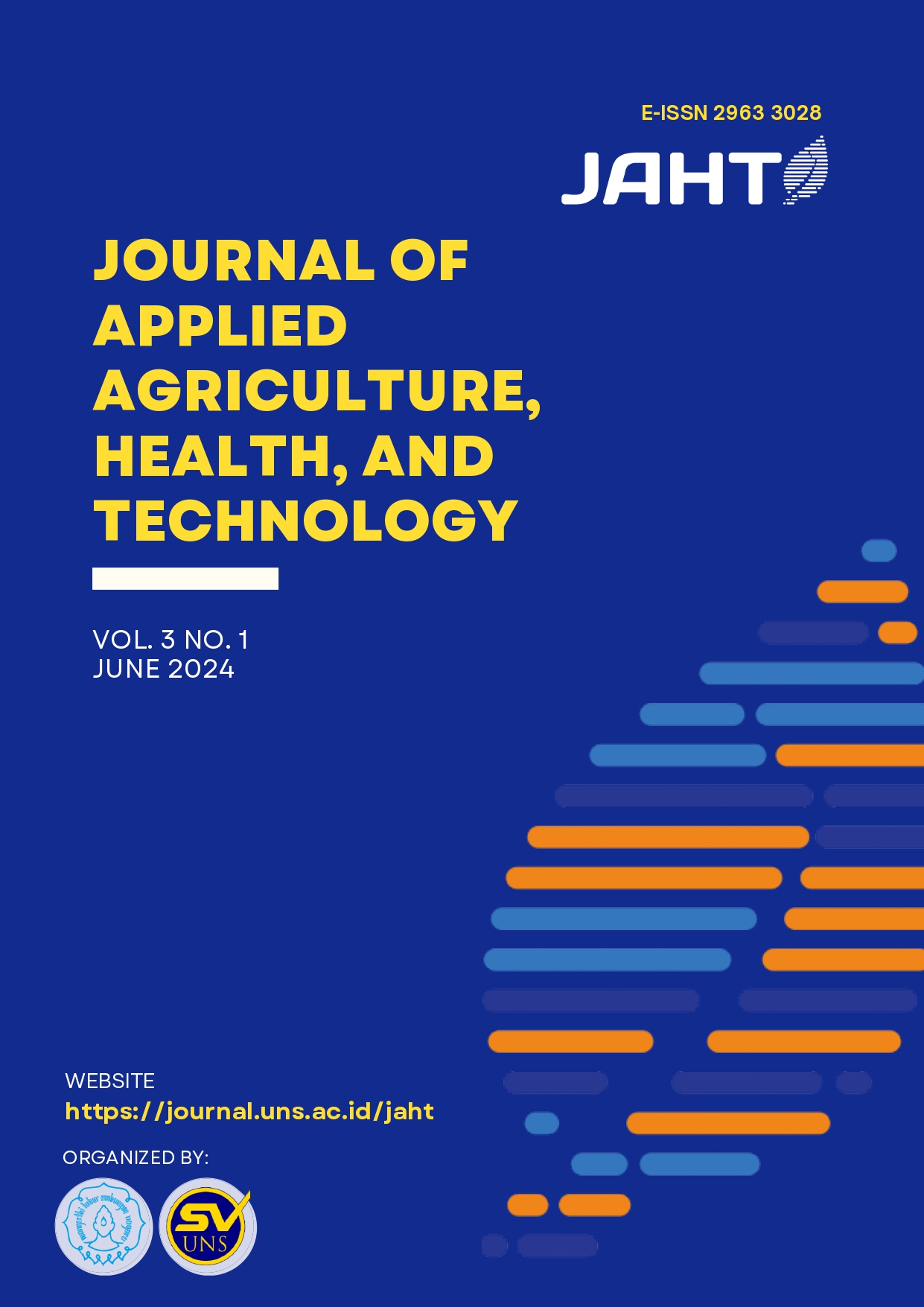Hubungan Desain Stasiun Kerja dan Postur Kerja Dengan Keluhan Musculoskeletal Disorders Pekerja Pelayanan Publik di Karanganyar
DOI:
https://doi.org/10.20961/z34caw77Keywords:
anthropometry, musculoskeletal disorders, repetitive motion, workstation design, work postureAbstract
A recent analysis of the 2019 Global Burden of Disease (GBD) data shows that approximately 1.71billion people worldwide are living with musculoskeletal disorders (MSDs). Office work has the potential to cause musculoskeletal disorders (MSDs), as office work is characterized by monotonous and repetitive movements for long periods of time and work with static postures. The urgency of this
study is to obtain an overview of the relationship between workstation design and work posture with complaints of musculoskeletal disorders. This research method is analytical observational research with cross-sectional approach. This research was conducted in Karanganyar Public Service Mall in 2023. The study population was Karanganyar Public Service Mall workers with a total of 48 workers. The sampling technique was total population technique. Musculoskeletal complaints were measured using the Nordic Body Map questionnaire, while workstation design was measured using a measuring device and work posture was measured using the Rapid Upper Limb Assessment (RULA) method. The results showed that there was a significant relationship between work posture and musculoskeletal complaints with a pvalue = 0.037 and a correlation coefficient or r of 0.285
References
[1] Titus C. Civic Education for Global Comprehension. in Branson MS, et al. Study Civic Education From USA. Proofreading Syafruddin MY, Alimi MN, Khoiron. Yogyakarta: LKIS dan The Asia Foundation (TAF). 1999.
[2] Victoria AA, Tejamaya M. Pengaruh Faktor Individu Terhadap Gangguan Muskuloskeletal pada Pekerja Kantor PT.X. Jurnal Universitas Pahlawan. 2022;6(1):812–819. https://journal.universitaspahlawan.ac.id/index.php/prepotif/article/view/3296/2794
[3] Rienties B, Toetenel L. The impact of 151 learning designs on student satisfaction and performance: Social learning (analytics) matters. Proceedings of the sixth international conference on learning analytics & knowledge. 2016:339–343.
[4] Putri AA, Yulianti AB, Ismawati I. Hubungan antara posisi kerja terhadap keluhan musculoskeletal disorders pada
penjahit pabrik garmen di Kota Cimahi. Jurnal Integrasi Kesehatan Sains. 2020;2(2):118–21.
[5] Jalajuwita RN, Paskarini I. Hubungan posisi kerja dengan keluhan muskuloskeletal pada unit pengelasan PT. X Bekasi. Indones Journal Occup Saf Heal. 2015;4(1):33–42.
[6] Hutabarat J. Dasar Dasar Pengetahuan Ergonomi. Malang: Media Nusa Creative. 2017.
[7] Tarwaka. Ergonomi Industri Dasar-Dasar Pengetahuan Ergonomi Dan Aplikasi Di Tempat Kerja. Surakarta: Harapan Press. 2015.
[8] Masturoh I, Anggita N. Metodologi penelitian kesehatan. Edisi 1. Jakarta Selatan: Kementerian Kesehatan Republik Indonesia. 2018.
[9] Dahlan SM. Statistik untuk Kedokteran dan Kesehatan Deskriptif, Bivariat, dan Multivariat Dilengkapi Aplikasi dengan Menggunakan SPSS. Jakarta: Epidemiologi Indonesia. 2014.
[10] Notoatmodjo S. Metode Penelitian Kesehatan. Jakarta: PT Rineka Cipta. 2018.
[11] Sugiyono. Metode Penelitian Kuantitatif, Kualitatif, dan R&D. Bandung: Alphabet. 2019.
[12] Peraturan Menteri Tenaga Kerja Republik Indonesia Nomor. 5 Tahun 2018 Tentang Keselamatan Kesehatan Lingkungan Kerja.
[13] Nurhayati D. Hubungan Gerakan Berulah dengan Keluhan Low Back Pain Pada Pekerja Bagian Penempaan di Kawasan Industri Gamelan, Wirun, Sukoharjo. Universitas Sebelas Maret. 2020.
[14] Wijaya, Irwan S, Muhsin A. Analisa Postur Kerja Dengan Metode Rapid Upper Limb Assessment (RULA) Pada Operator Mesin Extruder di Stasiun Kerja Extruding Pada PT XYZ. Universitas Pembangunan Negeri Veteran Yogyakarta. 2018.
[15] Tarwaka. Ergonomi Industri, Dasar-dasar Pengetahuan Ergonomi dan Aplikasi di Tempat Kerja. Edisi 2. Surakarta: Harapan Press. 2019.
[16] Situmorang CK, Widjasena B, Wahyuni I. Hubungan Antara Durasi, Postur Tubuh, dan Penggunaan Komputer Terhadap Keluhan Neck Pain Pada Tenaga Kependidikan. Jurnal Kesehatan Masyarakat. 2020;8(5):672–678.











